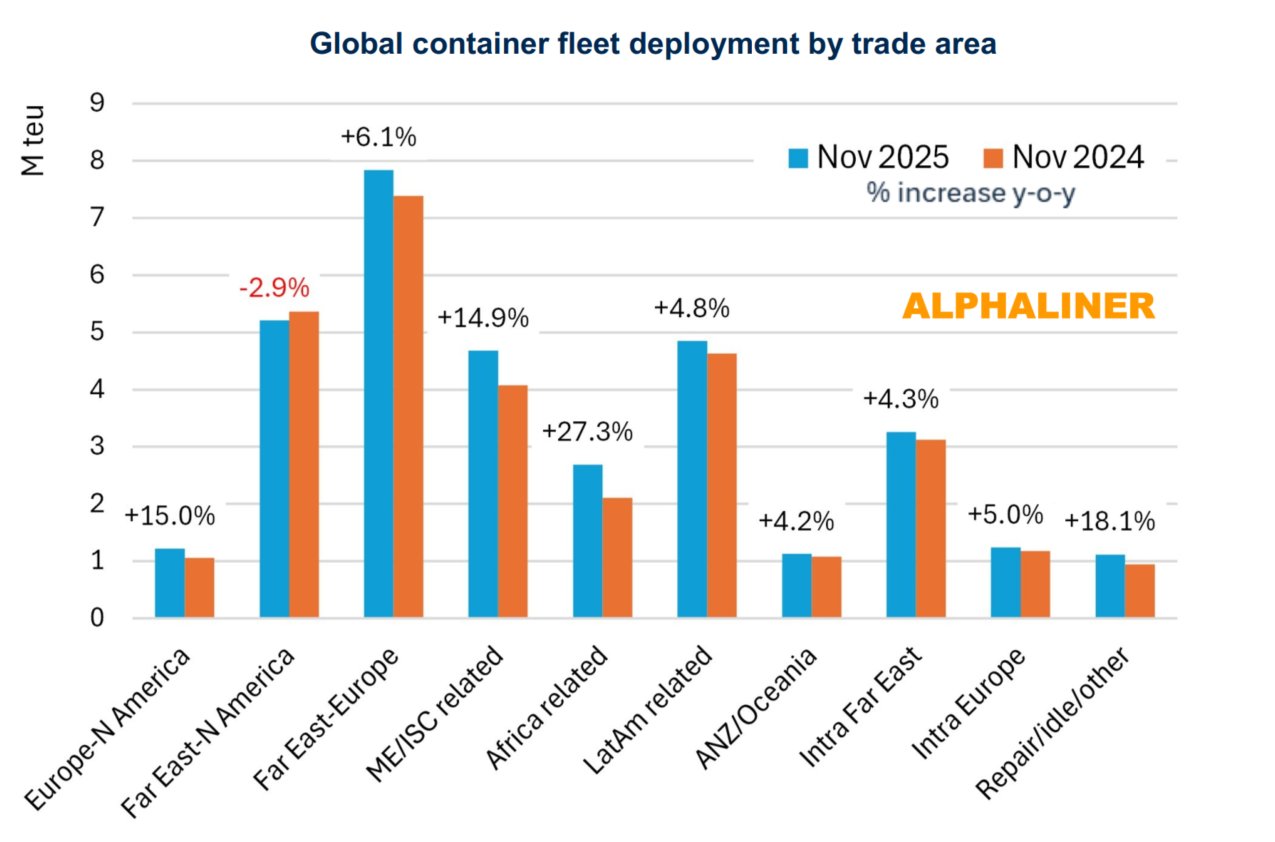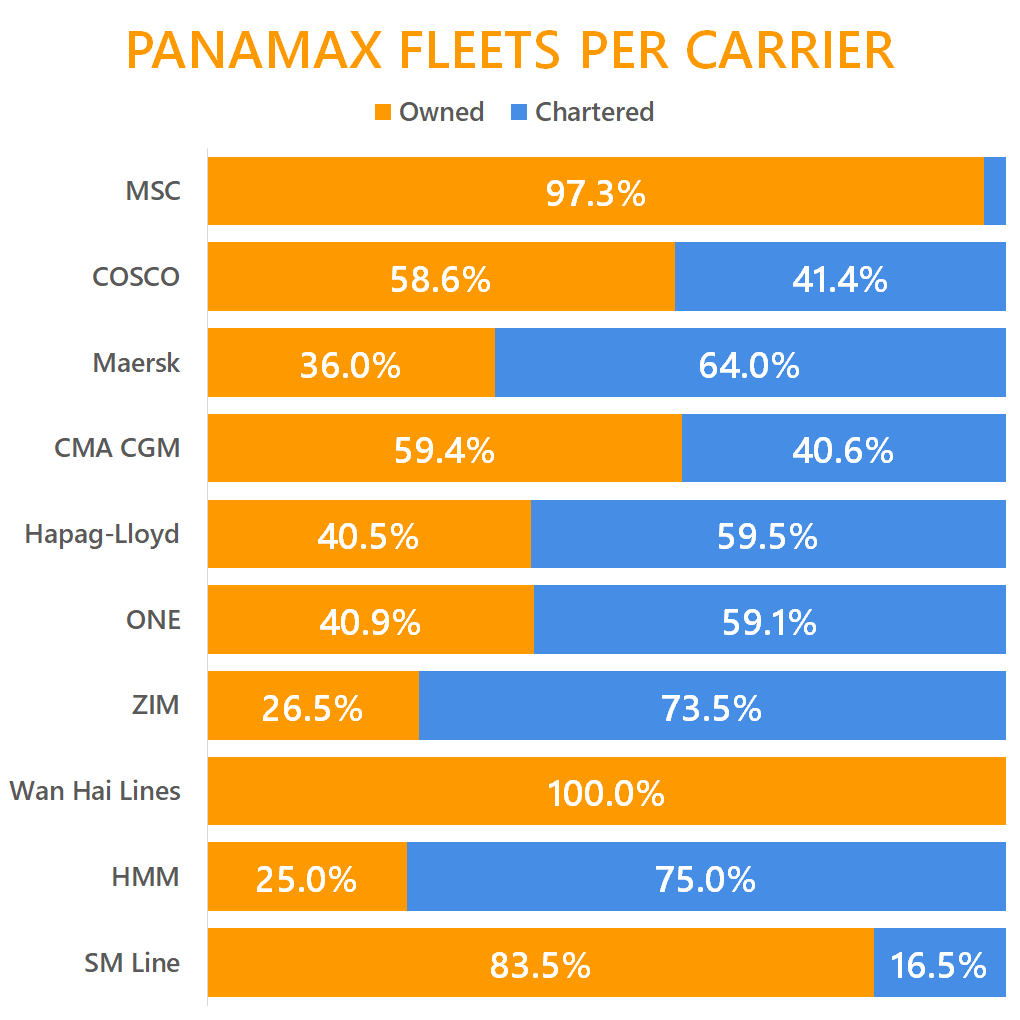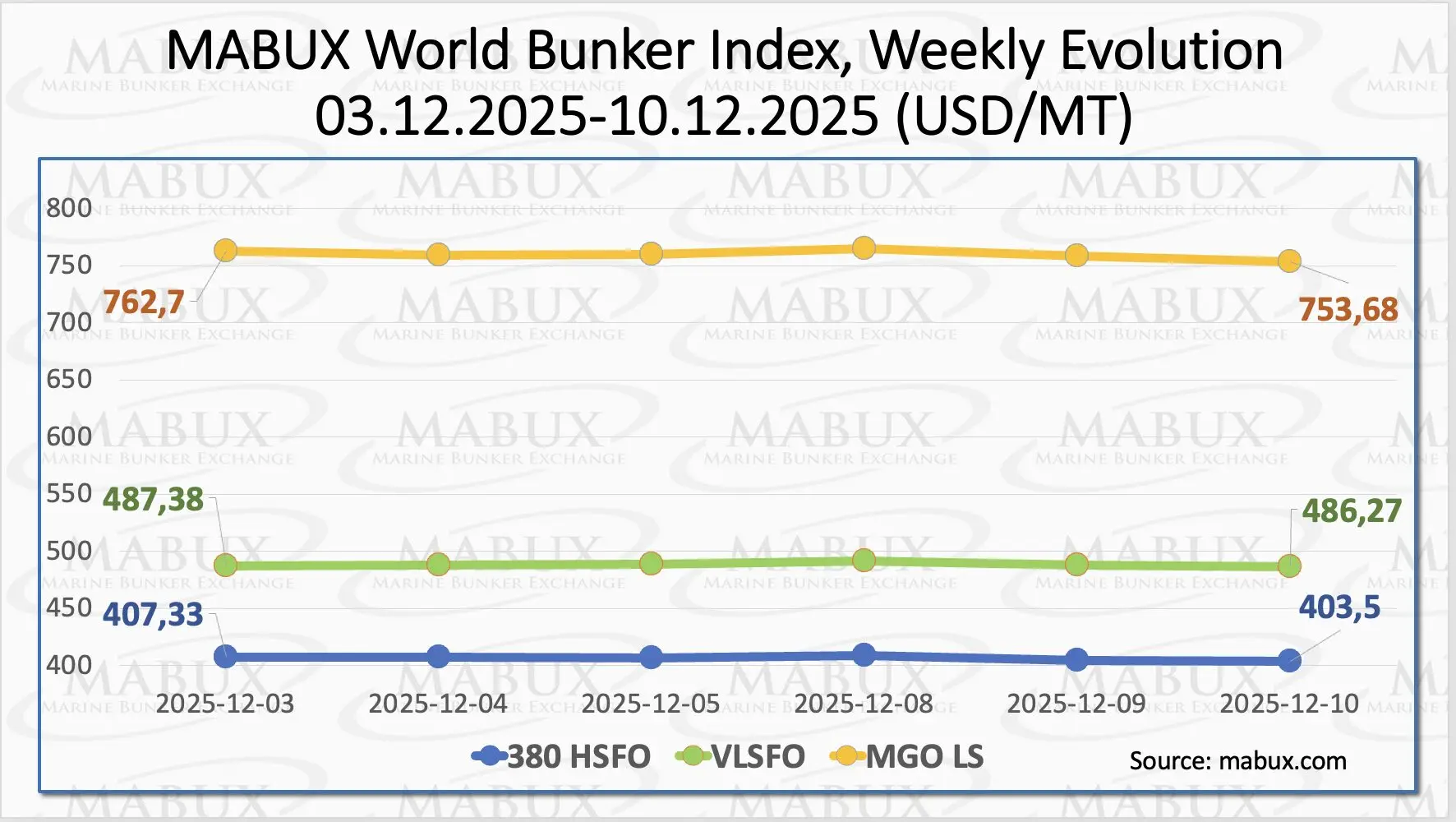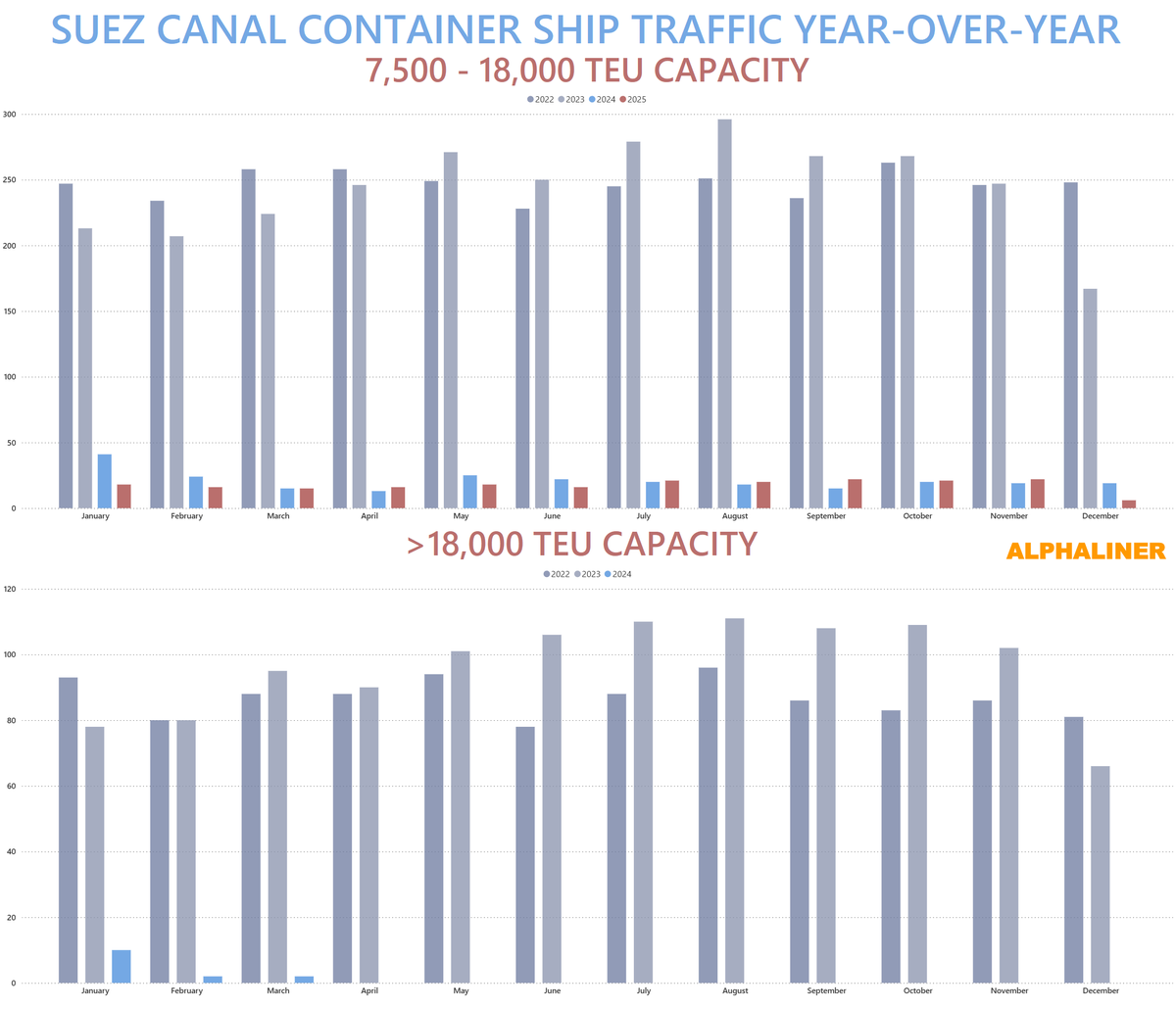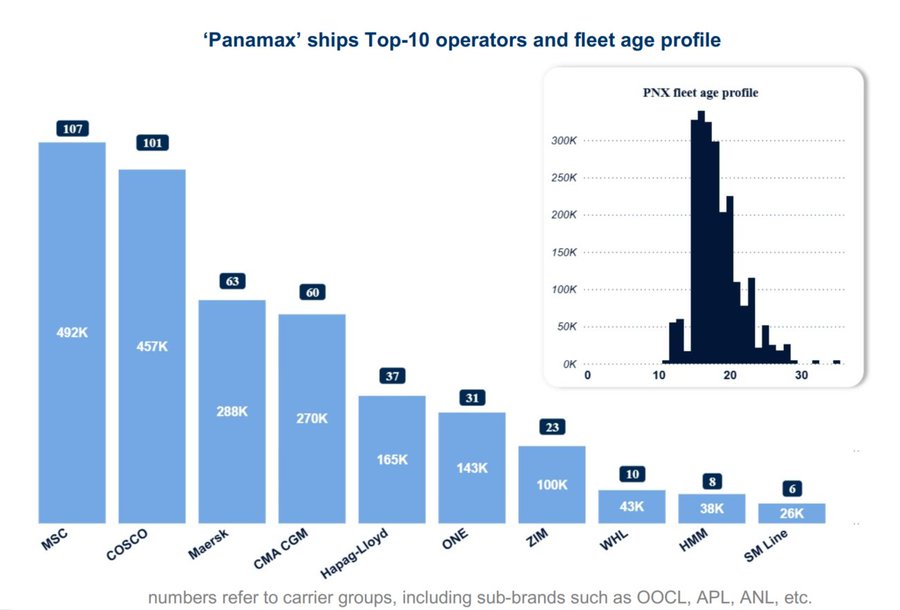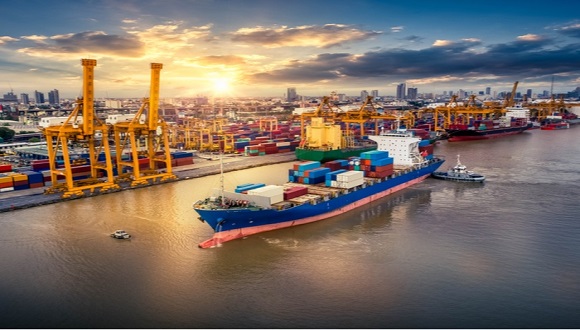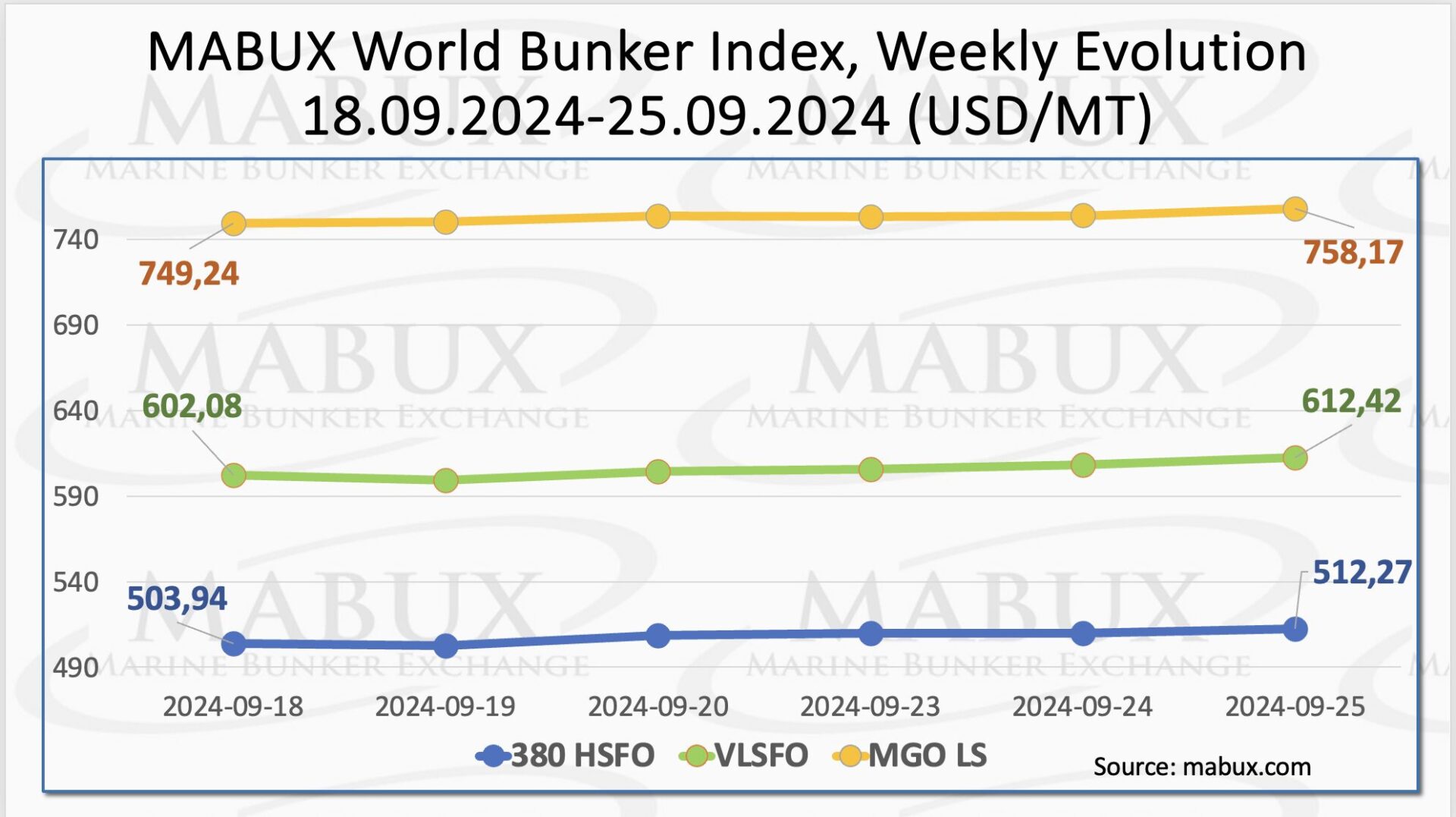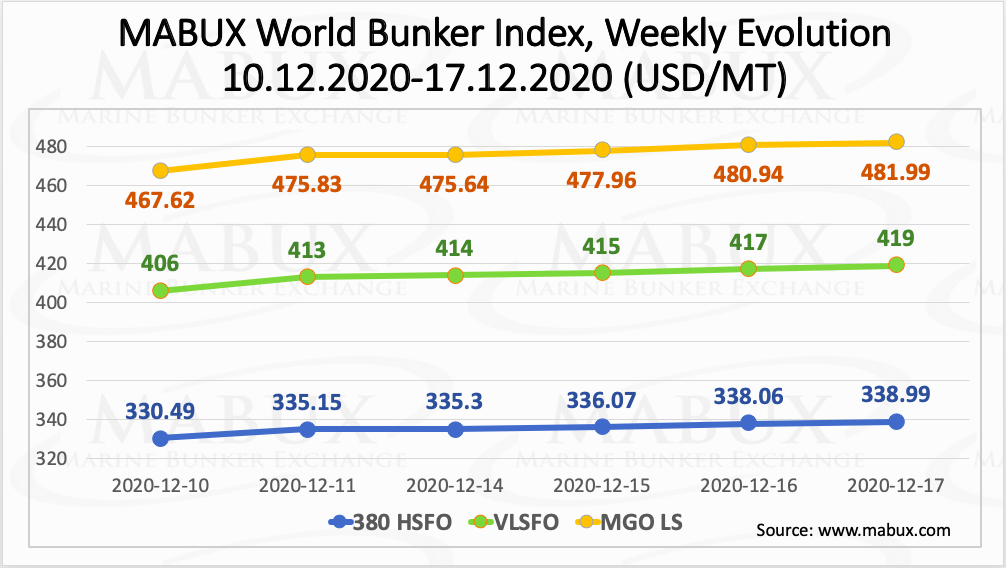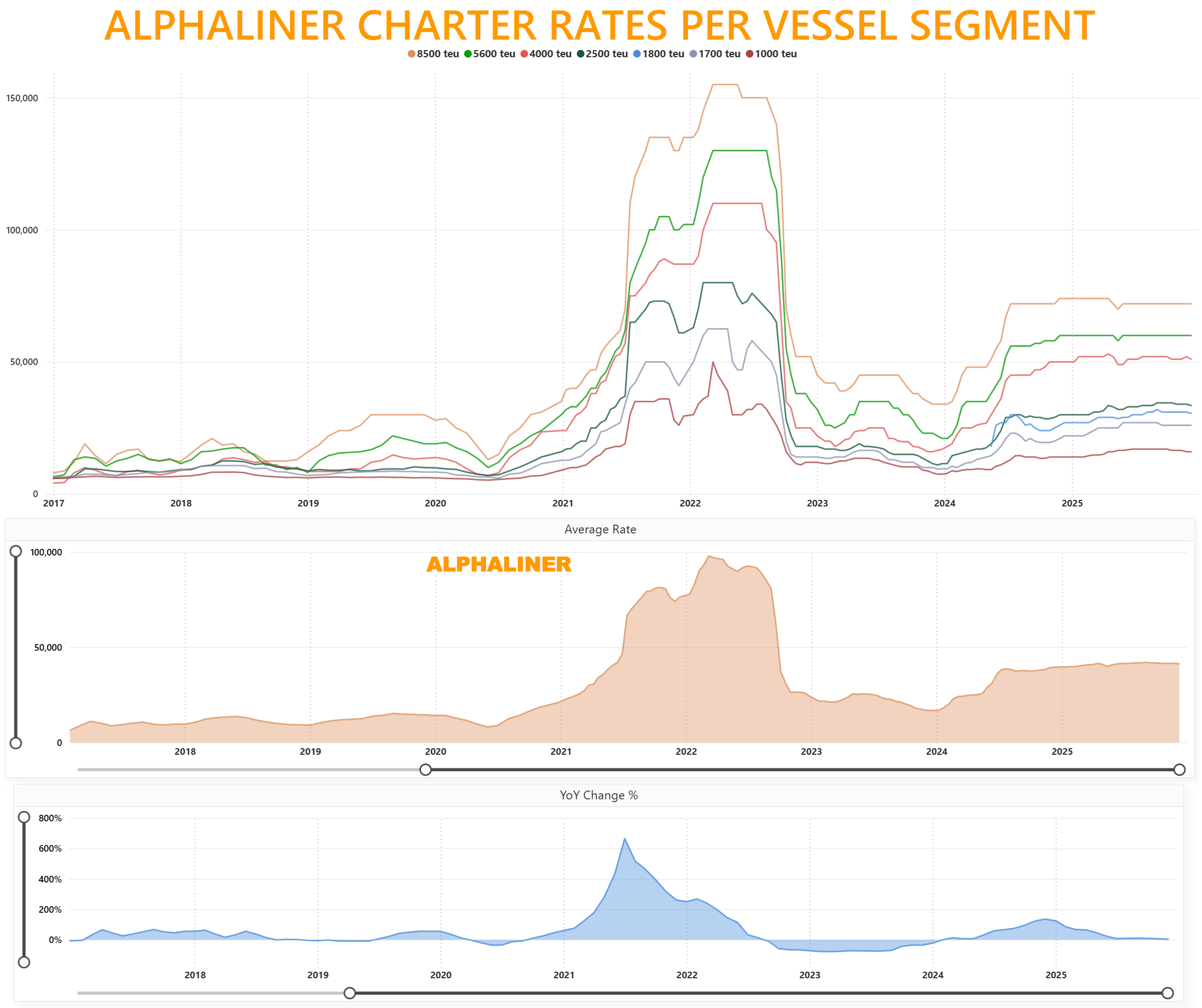
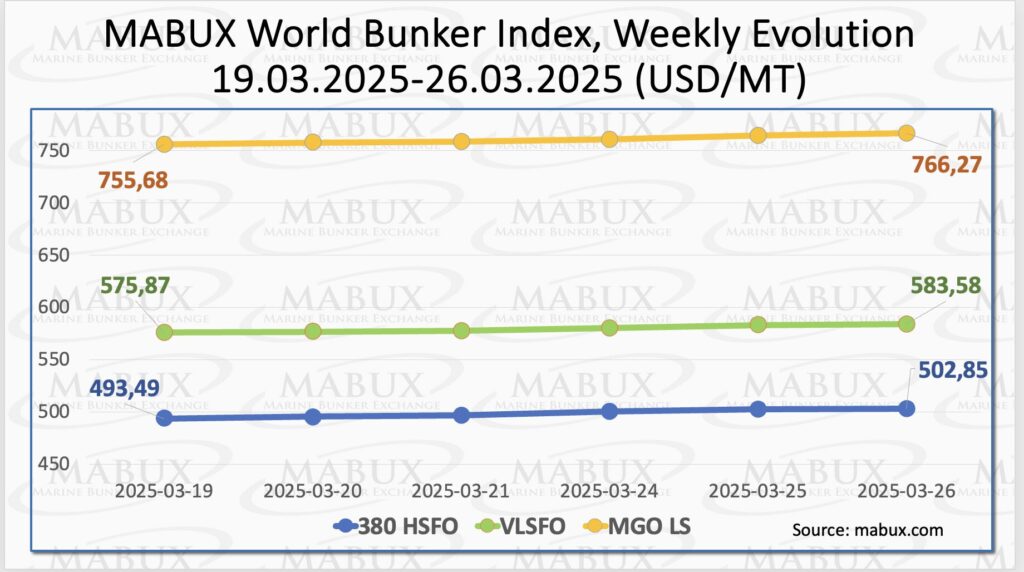
Over the 13th week, the global bunker indices MABUX experienced a moderate upward trend. The 380 HSFO index saw a slight increase of 9.36 USD, rising from 493.49 USD/MT last week to 502.85 USD/MT, surpassing the 500 USD mark.
The VLSFO index gained 7.71 USD, reaching 583.58 USD/MT from 575.87 USD/MT last week, while still remaining below the 600 USD threshold. Meanwhile, the MGO index climbed by 10.59 USD, increasing from 755.68 USD/MT last week to 766.27 USD/MT. As of this writing, the market maintained its moderate upward movement.
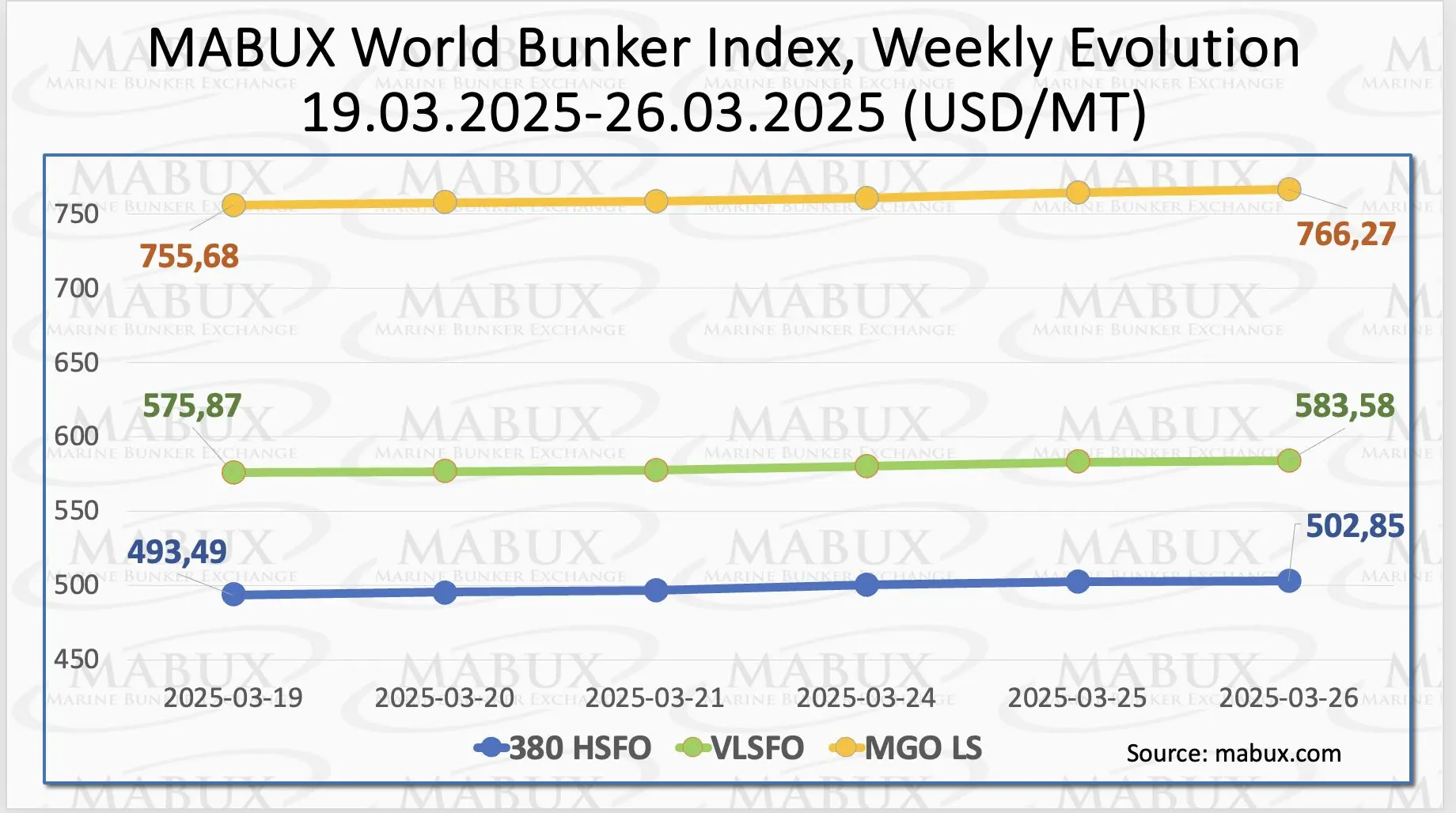 The MABUX Global Scrubber Spread (SS)—the price difference between 380 HSFO and VLSFO—has narrowed moderately, decreasing by $1.65 from $82.38 last week to $80.73. It remains at the $80.00 mark and well below the $100.00 breakeven threshold. In contrast, the weekly average of the index saw a slight increase of $0.26.
The MABUX Global Scrubber Spread (SS)—the price difference between 380 HSFO and VLSFO—has narrowed moderately, decreasing by $1.65 from $82.38 last week to $80.73. It remains at the $80.00 mark and well below the $100.00 breakeven threshold. In contrast, the weekly average of the index saw a slight increase of $0.26.
In Rotterdam, the SS Spread contracted further by $15.00, dropping from $54.00 last week to $39.00, breaking below the $40.00 mark. The port’s weekly average also declined by $10.50. Conversely, in Singapore, the price gap between 380 HSFO and VLSFO expanded by $2.00, rising from $50.00 last week to $52.00, with the weekly average increasing by $10.00.
Overall, there is no significant shift in SS Spread dynamics, reinforcing the cost-effectiveness of using conventional VLSFO over the 380 HSFO + Scrubber combination. More details are available in the Differentials section of mabux.com.
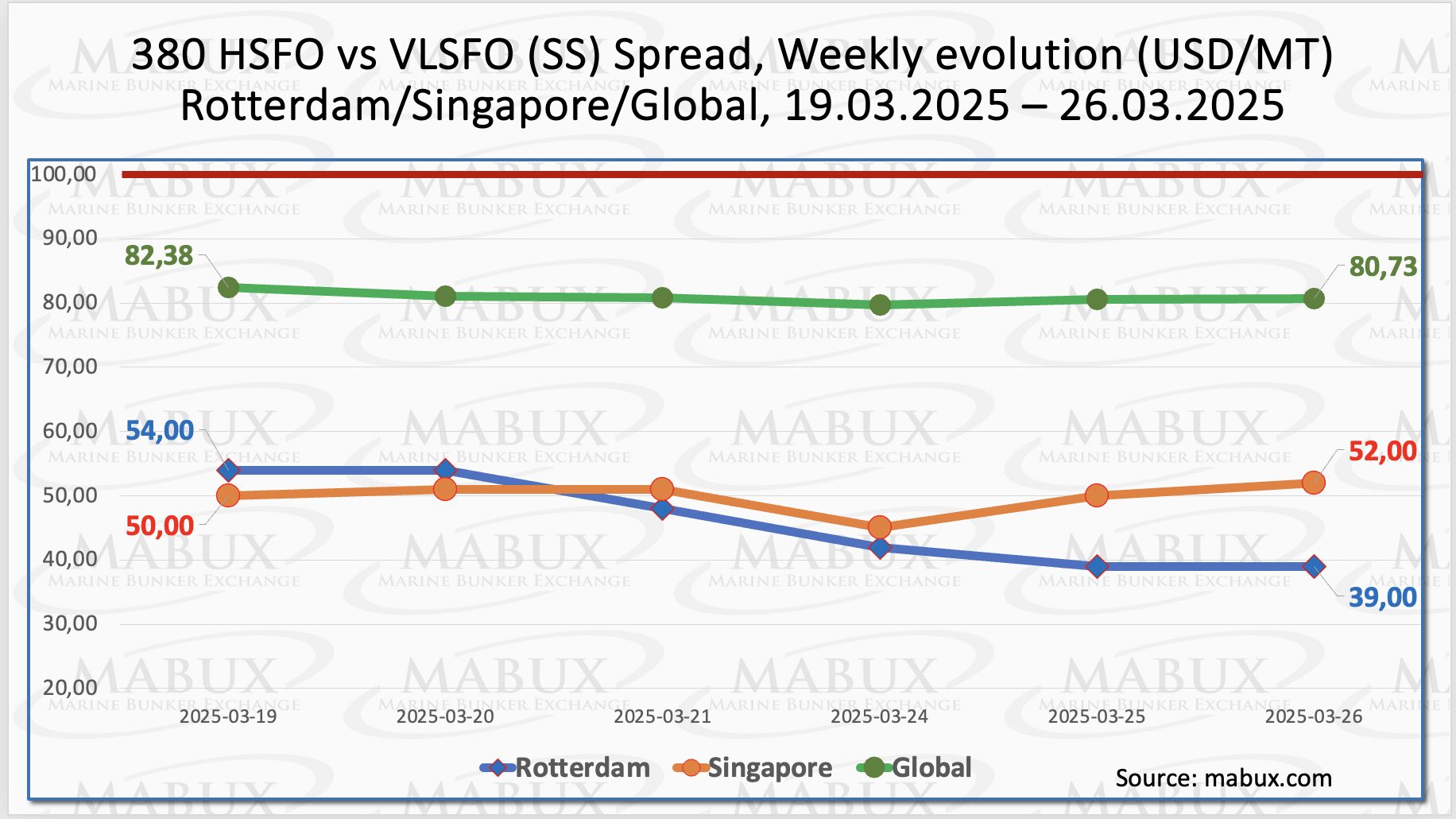 Several EU member states, including economic powerhouses Germany and France, are urging the bloc to adopt a more flexible approach to its mandatory 90% gas storage capacity target by November 1 each year. They argue that greater flexibility is needed to prevent price spikes and market speculation.
Several EU member states, including economic powerhouses Germany and France, are urging the bloc to adopt a more flexible approach to its mandatory 90% gas storage capacity target by November 1 each year. They argue that greater flexibility is needed to prevent price spikes and market speculation.
Germany, Italy, and the Netherlands are particularly concerned that high forward gas prices for the summer months could make gas storage unprofitable for energy companies. In ongoing discussions, the Netherlands, Slovakia, and Hungary are advocating for a 10% deviation from the 90% target, while Poland has proposed a more flexible timeframe, allowing storage to reach the required level anytime between October 1 and December 1.
With EU gas storage currently being depleted at the fastest rate in seven years, the summer replenishment season is already facing challenges related to availability, pricing, and the cost of securing additional LNG.
As of March 25, European regional storage facilities were 33.91% full, reflecting a decrease of 0.62% from the previous week and a significant drop of 37.42% since the beginning of the year (71.33%). The rate of gas withdrawal from storage has slowed due to rising average temperatures.
At the end of the 13th week, the European gas benchmark TTF experienced moderate growth, increasing by 0.800 euro/MWh to 41.555 euro/MWh, up from 40.755 euro/MWh last week.
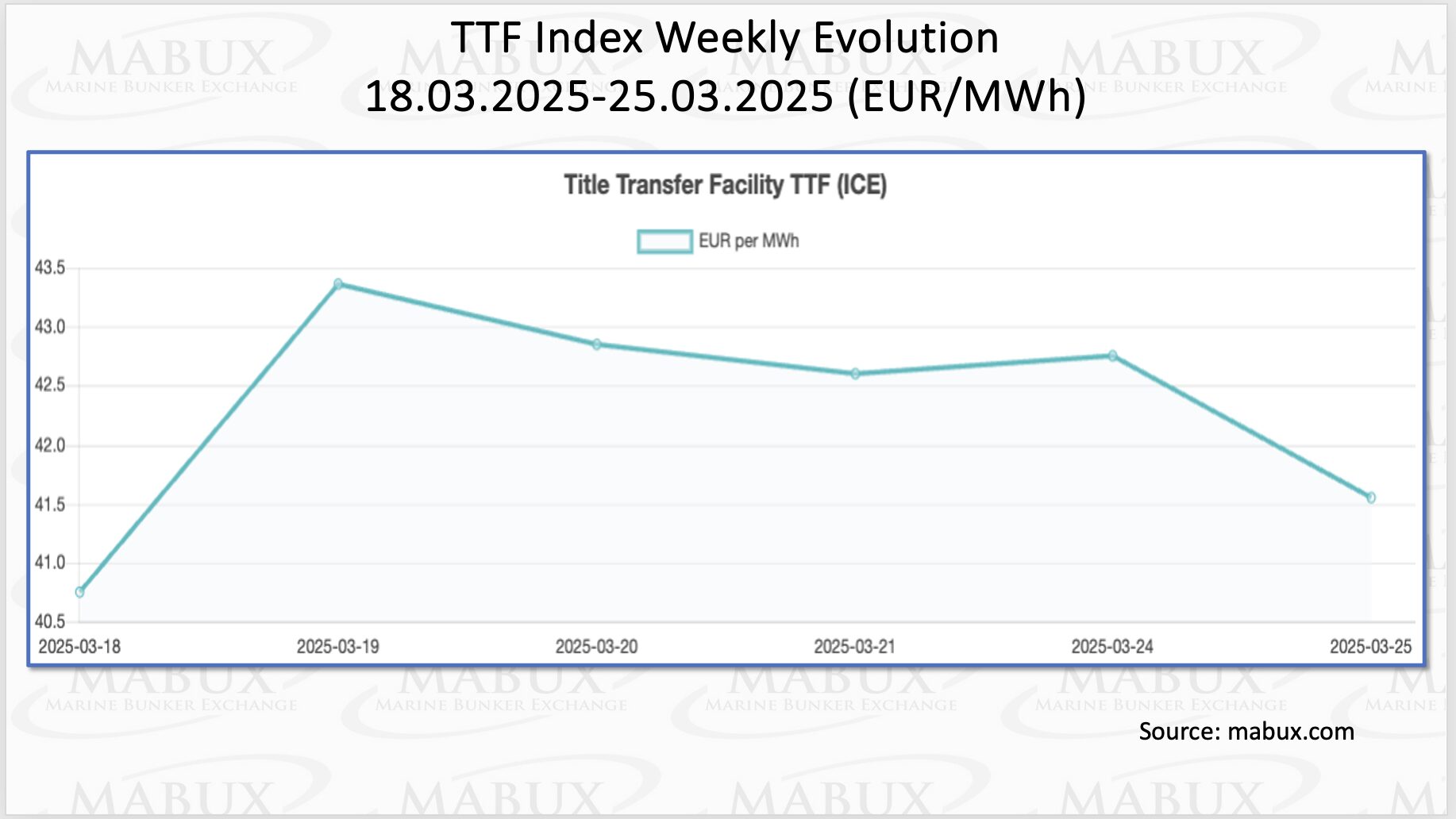 By the end of the week, the price of LNG as a bunker fuel in the port of Sines (Portugal) rose by another $37 compared to the previous week, reaching $874/MT on March 24. Meanwhile, the price gap between LNG and conventional fuel widened to $147 in favor of MGO LS on March 25, up from $121 the previous week.
By the end of the week, the price of LNG as a bunker fuel in the port of Sines (Portugal) rose by another $37 compared to the previous week, reaching $874/MT on March 24. Meanwhile, the price gap between LNG and conventional fuel widened to $147 in favor of MGO LS on March 25, up from $121 the previous week.
On that day, MGO LS was quoted at $727/MT in the port of Sines. More details can be found in the LNG Bunkering section on the mabux.com website.
 At the end of week 13, the MABUX Market Differential Index (MDI)—which compares market bunker prices (MBP) to the digital bunker benchmark MABUX (DBP)—indicated a gradual shift towards fuel undervaluation in the VLSFO and MGO LS segments.
At the end of week 13, the MABUX Market Differential Index (MDI)—which compares market bunker prices (MBP) to the digital bunker benchmark MABUX (DBP)—indicated a gradual shift towards fuel undervaluation in the VLSFO and MGO LS segments.
 The overall balance of overvalued and undervalued ports continued shifting towards undervaluation, with one additional port in both the VLSFO and MGO LS segments. This trend suggests that bunker fuel underpricing may persist in the coming week.
The overall balance of overvalued and undervalued ports continued shifting towards undervaluation, with one additional port in both the VLSFO and MGO LS segments. This trend suggests that bunker fuel underpricing may persist in the coming week.
More detailed information on the correlation between market prices and the MABUX digital bunker benchmark is available in the Digital Bunker Prices section of mabux.com.
New research from UMAS and the UCL Energy Institute warns that developing countries risk being left behind in the shipping industry’s transition to new fuels. Limited access to finance and higher capital costs could double the price of e-fuels produced in these regions.
The study analyzed the cost of producing e-ammonia across different countries and found that large-scale projects in Brazil, India, and sub-Saharan Africa would be uncompetitive compared to those in Australia, despite having similar or better renewable energy resources.
To address this disparity, the report recommends allocating some of the International Maritime Organization’s (IMO) funds toward grants and concessional financing to offset higher production costs in low-income countries. This would require an estimated $50 billion, in addition to funds for a reward mechanism and other related needs.
A 2020 study by UMAS, UCL, and the Global Maritime Forum estimated that decarbonizing the shipping industry by 2050 will require around $1.6 trillion in investment, with approximately $400 billion needed by 2030 alone.
We anticipate that a moderate upward trend will continue to dominate global bunker market dynamics in the coming week.
Source: MABUX

